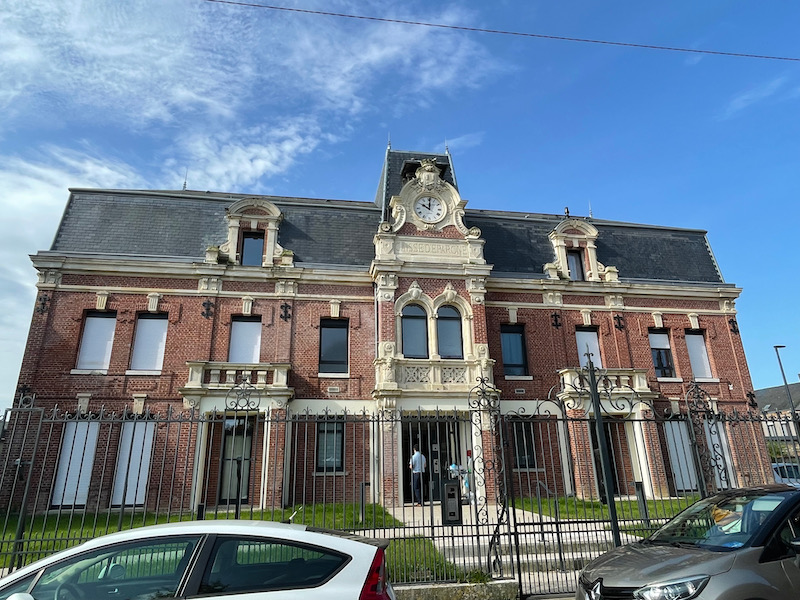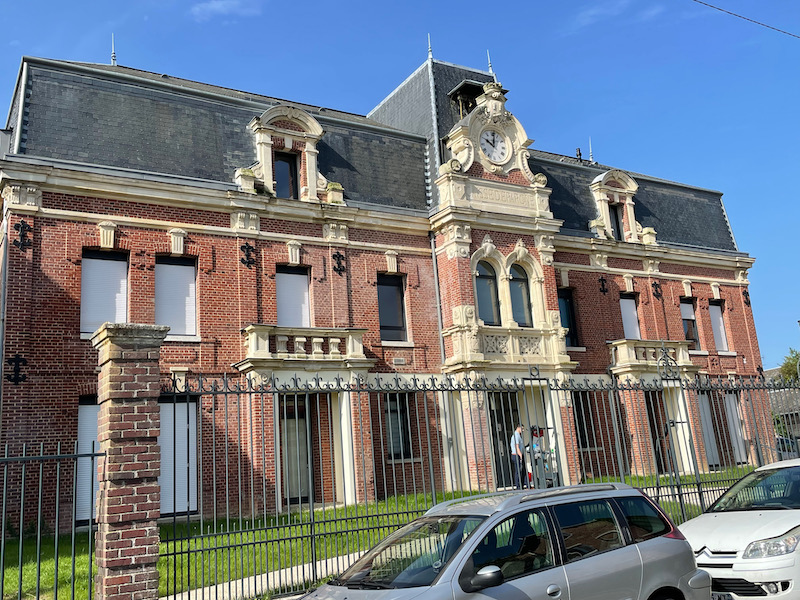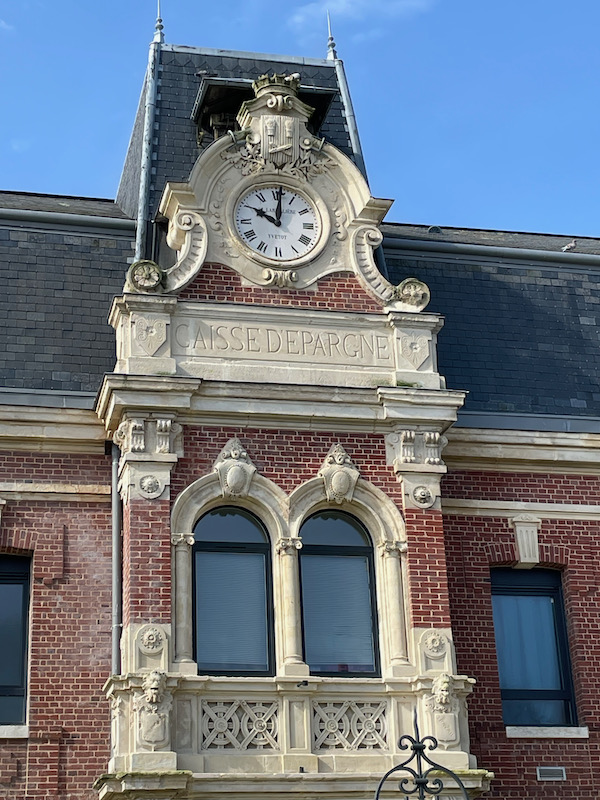Our Blog - Normandy 2023 - Yvetot, France
The name Yvetot comes from the Germanic name "Yvo" and the Old Norse "topt" meaning "property of", so Yvetot means 'property of Yvo'. The origins of Yvetot are not clearly known but a charter from the Duke of Normandy Richard II to the Abbey of Saint-Wandrille in 1021 mention Yvetot. Before WWII, the city center was mainly made of brick after a fire in the 17th century that took out most of the half-timbered houses. There are still a few of them remaining dotted around the town.
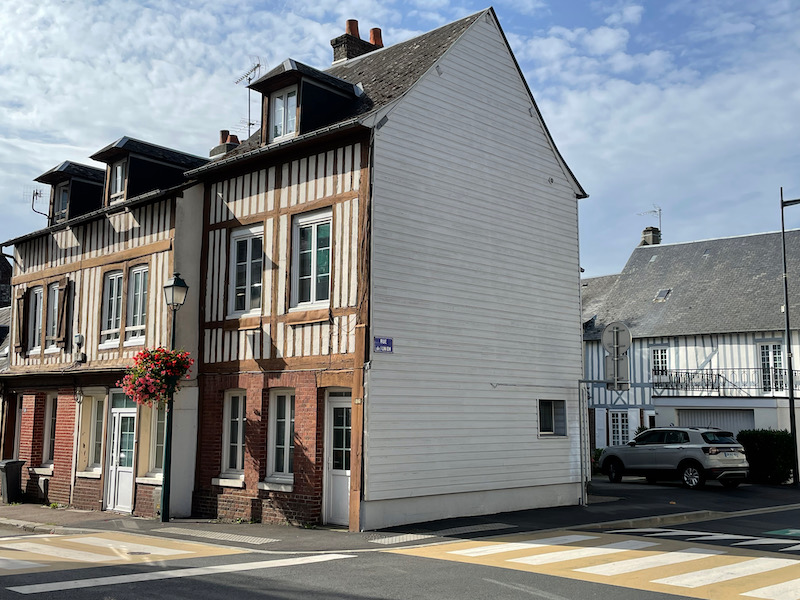
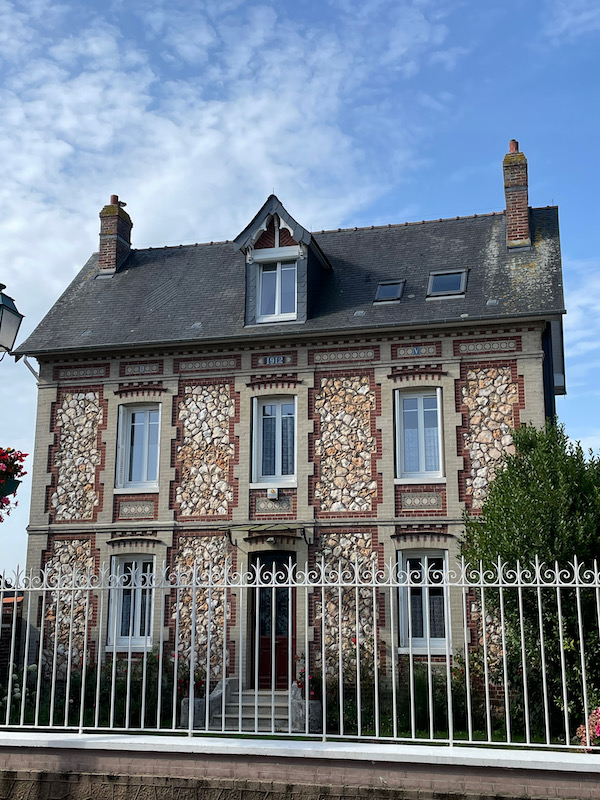
After the bombings of June 1940, much of the city was destroyed, including the parish church. In 1941, an urban plan was drawn up but it doesn't seem to have been fully realized because another urban plan was drawn up in 1946 that harmonized the city center by using the same materials and by equalizing the height of the buildings.
The tourist office has 2 walking tours around the town and we followed one of them around the center of the city (dodging all of the people who were there for the morning open market). Our first stop was at the Saint Pierre church, which sticks out like a sore thumb in the middle of the older-style buildings. This was built as part of the 1946 urban plan to replace the 18th century church that was destroyed in WWII. It is round in shape with a separate bell tower and houses the largest stained-glass windows in Europe (1026 m²), created by Max Ingrand who was one of the most famous post-war master glassmakers in France. The 3rd picture shows how the majority of the building is actually glass.
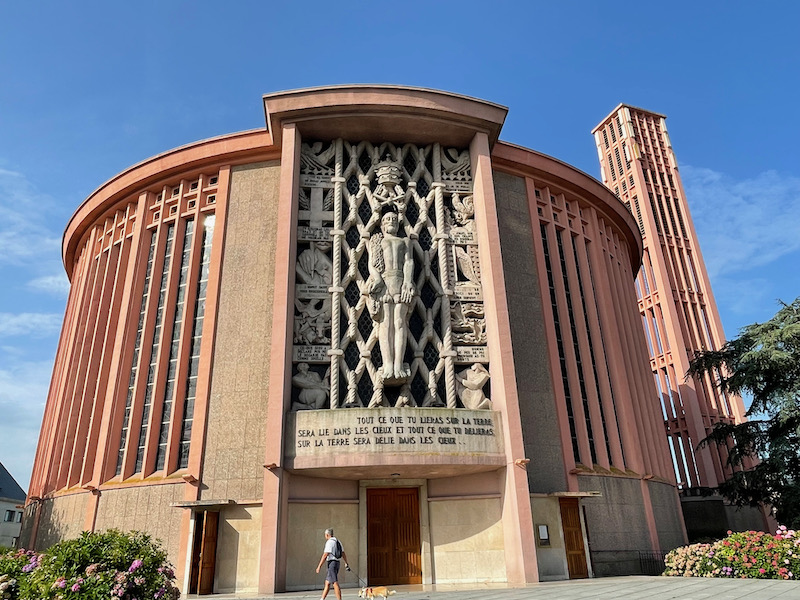
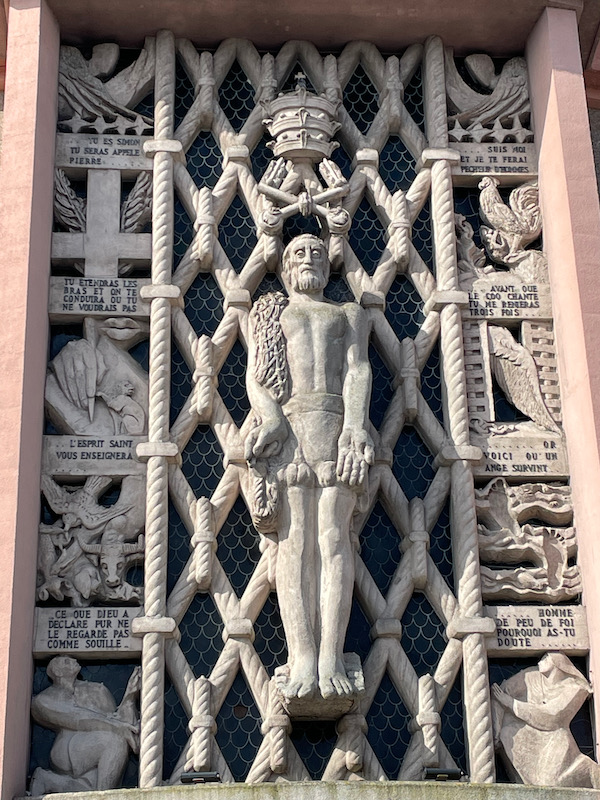
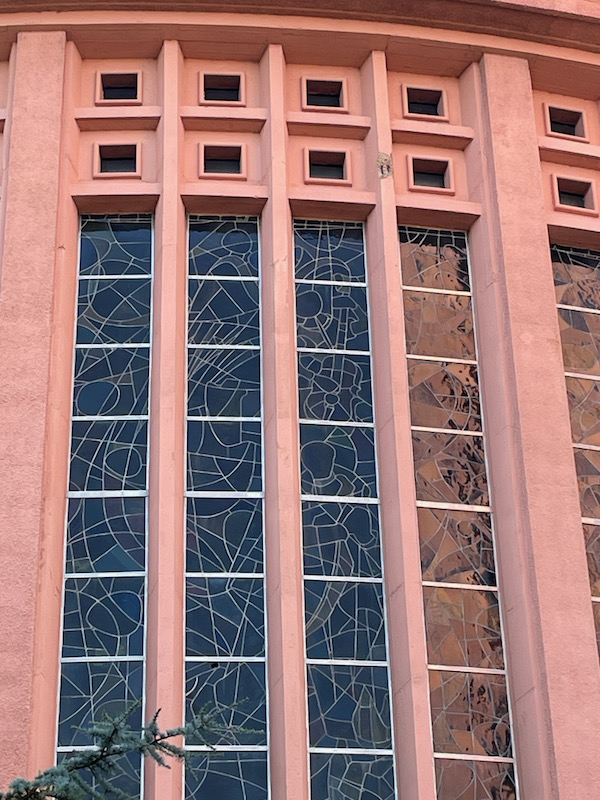
And now inside .... there is nothing here to show OTHER than the stained-glass windows, but they are really nice! Full of green, gold, blue, and red, you can find various saints and musical-instrument-playing angels. Here you can see Saint Valery (in red) and Saint Peter (Pierre) with his keys (in white).
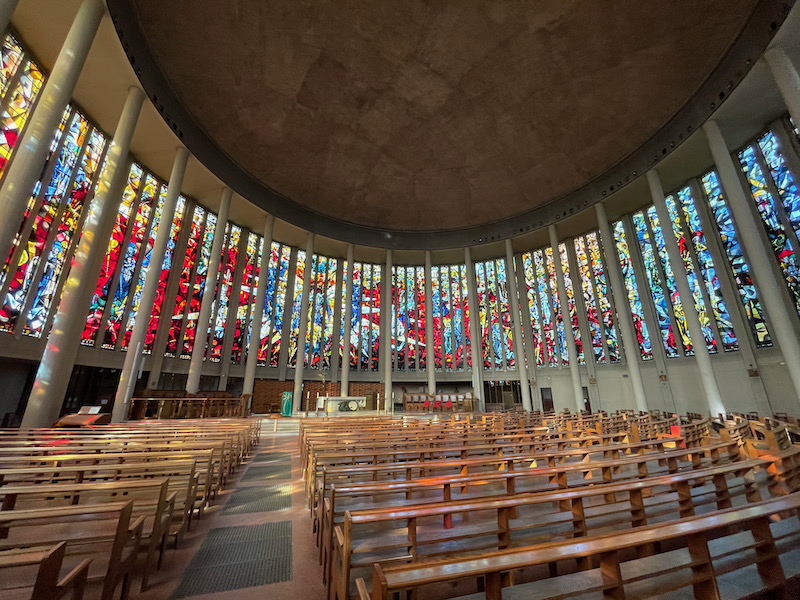
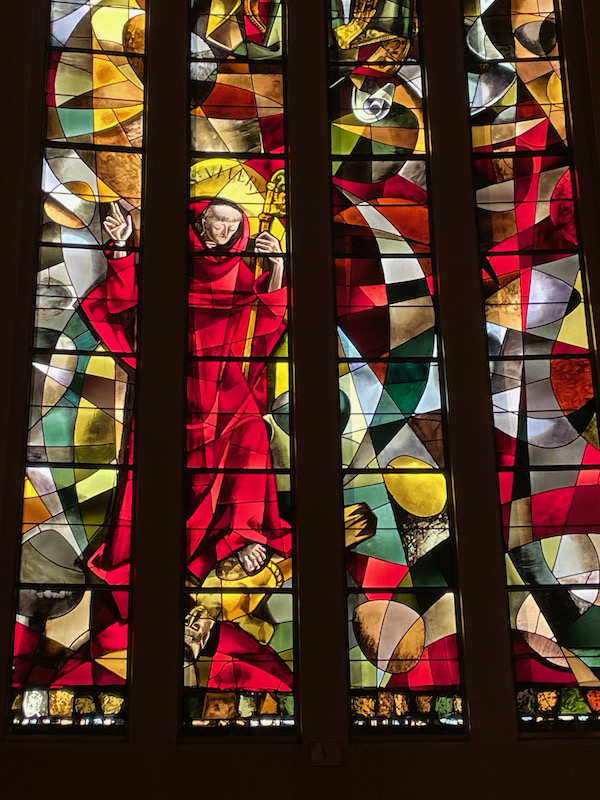
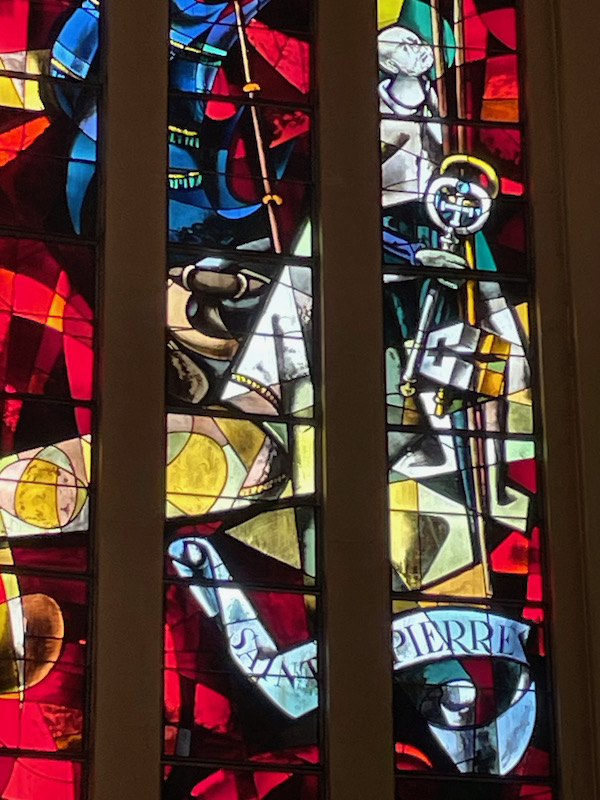
Two musical angels, one with a horn and one with a harp.
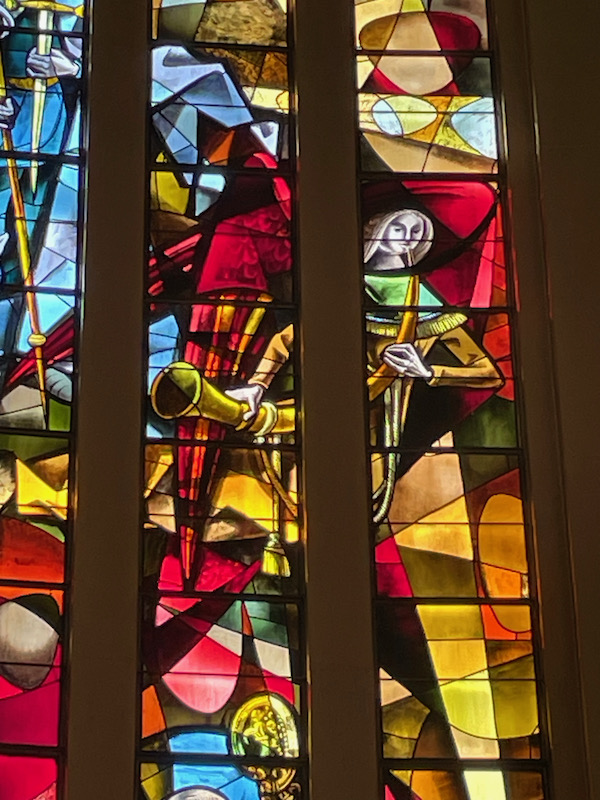
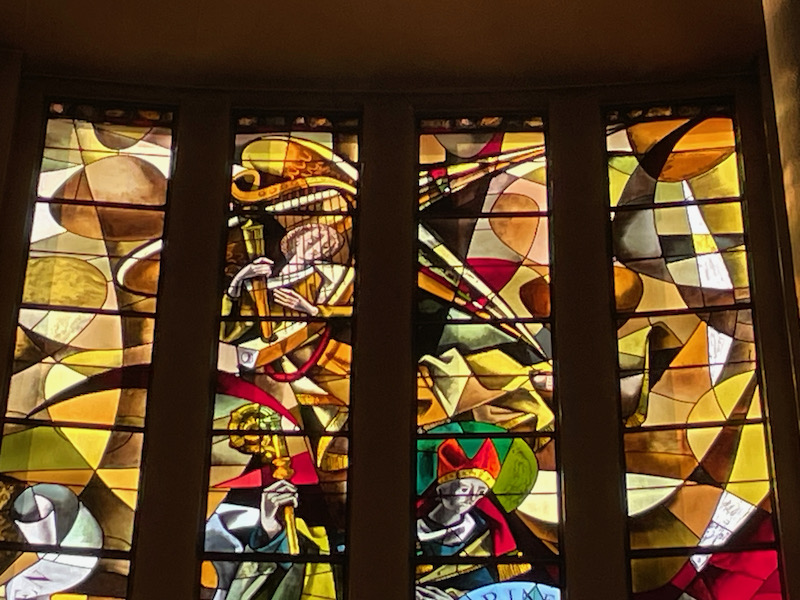
There is also a set of windows that are others, specifically Normans from the area including Joan of Arc (with her sword in blue).
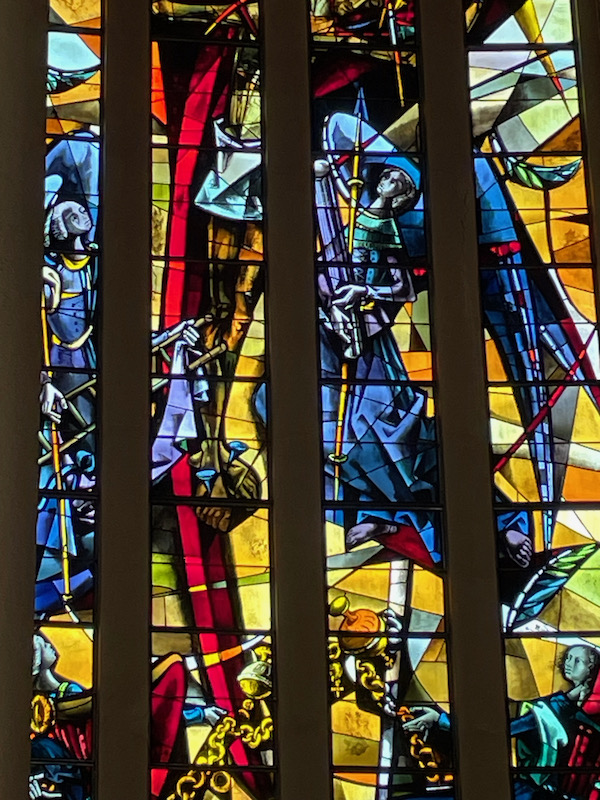
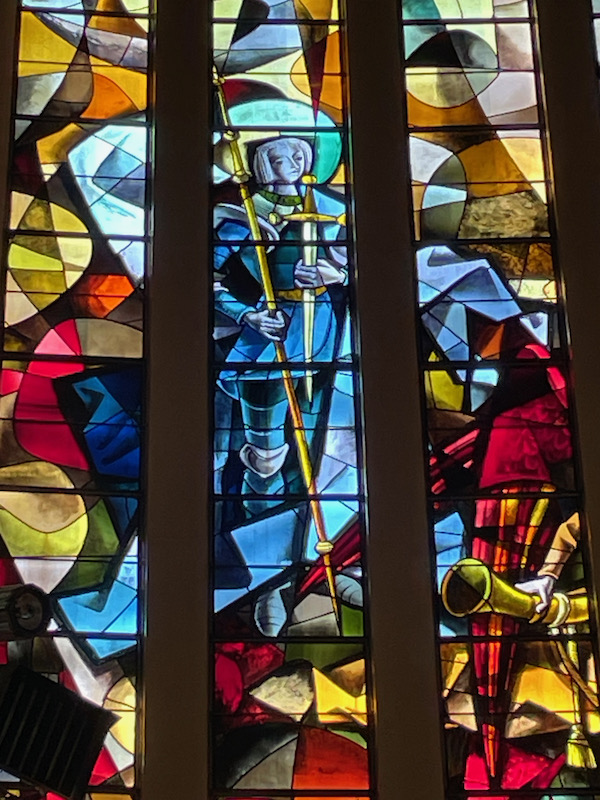
Now a video to attempt to show a 360 degree view ....
In the center of Place Louis Féron stands the Saint Louis fountain. The first traces of the history of this fountain date back to the end of the 19th century with an engraving dated 1878 representing the construction project of the monument. It was completed in 1884, with a spring nymph in the center pouring water from a vase. Louis Féron was born nearby, collected art throughout his life (especially ivories), and died in Yvetot. His art colletion was given to the city and is now housed in the Museum of Ivories.
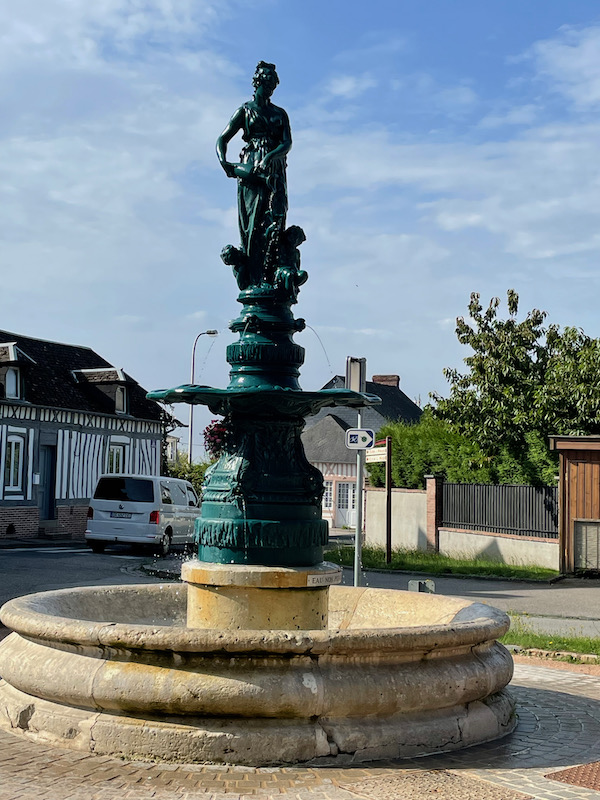
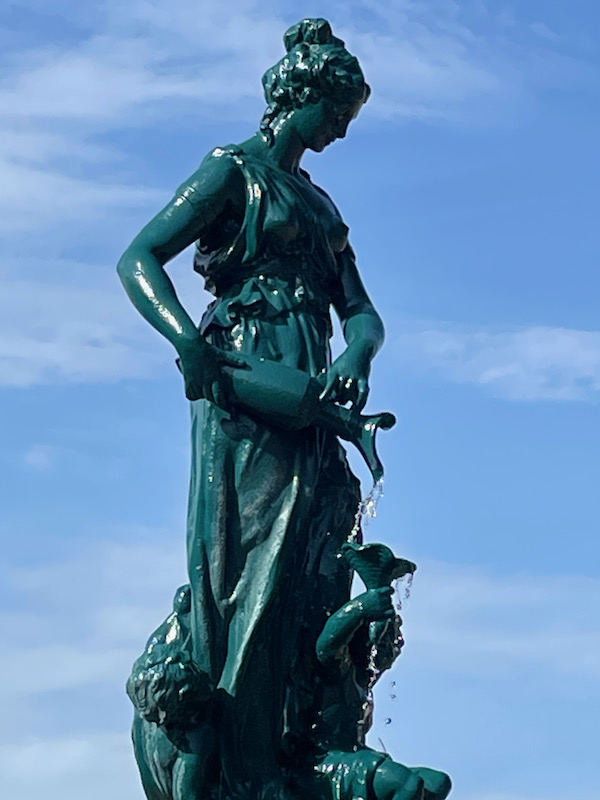
The former Caisse d'Epargne bank building was built in 1881. It is no longer a bank although we aren't exactly sure what it is now.
